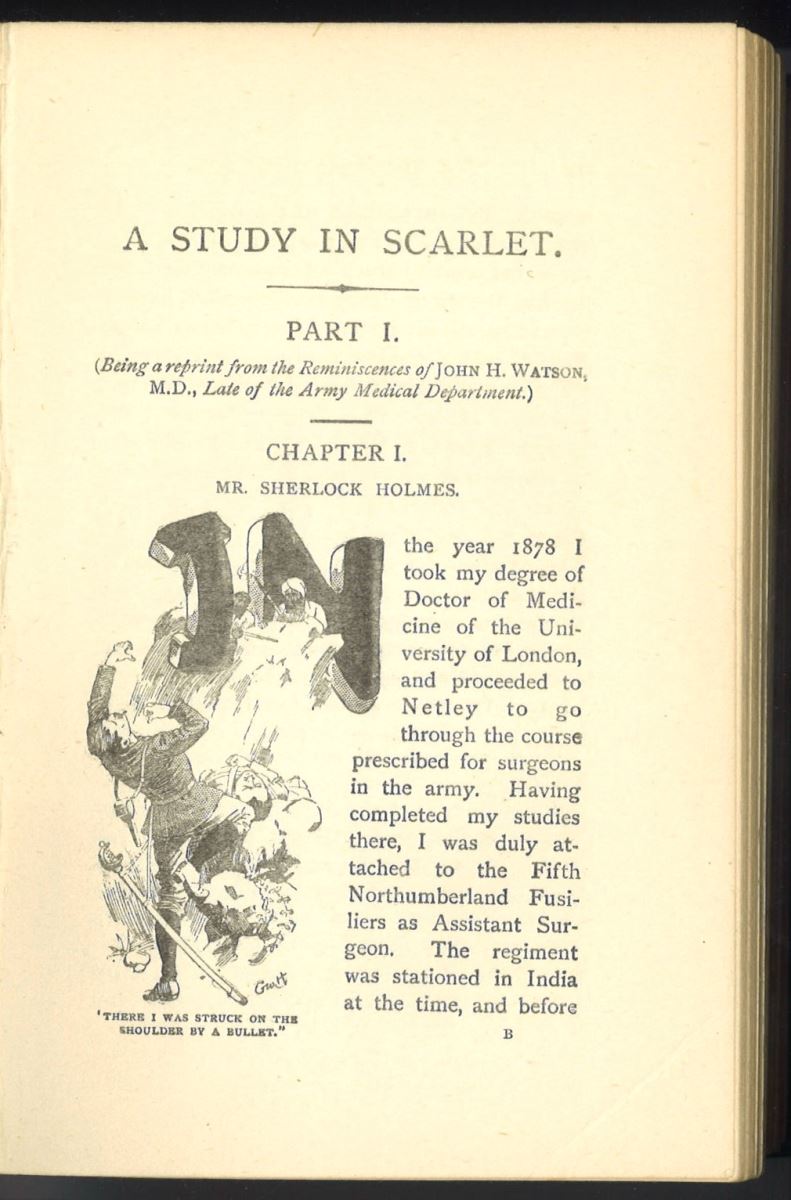Doctor Watson’s War Service.
“You have been in Afghanistan, I perceive.“ Thus is Doctor Watson baffled for the first time by the deductive powers of Sherlock Holmes. It occurs during their initial meeting in A Study in Scarlet.
Doctor Watson had indeed been in Afghanistan, serving his country as an army surgeon. Watson’s war service was short and brutal. This is reflected on his return to civilian life; “…with my health irretrievably ruined but with permission from a paternal government to spend the next nine months in attempting to improve it.“
In 1878, Watson took his degree of Doctor of Medicine of the University of London. He then “…proceeded to Netley to go through the course prescribed for surgeons in the Army.“
Netley is a village on the south coast of England near the city of Southampton. In 1856, construction began on a new military hospital at Netley, at the suggestion of Queen Victoria herself. The Royal Victoria Hospital eventually opened in 1863.
Doctor Watson would have found himself inside Britain’s largest military hospital. It had space for some 1,000 beds spread across 138 wards. Stretching for a quarter of a mile, it was then the world’s longest building. The Royal Victoria Hospital was used to treat the wounded from a number of conflicts - including both World Wars - before it was finally demolished in 1966. Today the area is covered by the Royal Victoria Country Park. The Chapel is all that remains of the great hospital that once stood there.
With his studies completed, Doctor Watson joined the Fifth Northumberland Fusiliers as an assistant surgeon. Travelling to India, Watson lands at Bombay where he finds, “…that my corps had advanced through the passes and was already deep in the enemy’s country.“ Doctor Watson eventually reaches Kandahar; “…where I found my regiment and at once entered upon my new duties.“
The Second Anglo-Afghan War had broken out by this time. A conflict between the British Raj and the Emirate of Afghanistan, it was fought from 1878 to 1880. The British ultimately prevailed and withdrew their forces, while gaining control of Afghan foreign policy.
Doctor Watson is eventually attached to, “the Berkshire’s with whom I served at the fatal battle of Maiwand.“ This presumably refers to the 66th (Berkshire) Regiment of Foot. Formed in 1756, this was an infantry regiment of the British Army.
The Battle of Maiwand took place on 27 July, 1880. The battle resulted in the defeat of a small force of British and Indian troops by a larger Afghan force.
Doctor Watson was wounded during the battle; “I was struck on the shoulder by a Jezail bullet, which shattered the bone and grazed the subclavian artery.“ The Jezail referred to was a long rifle that was a favourite among the Pashtun tribesmen. These warriors fought in the First and Second Anglo-Afghan Wars.
Thankfully Watson is rescued from the battlefield: “I should have fallen into the hands of the murderous Ghazis had it not been for the devotion and courage shown by Murray, my orderly, who threw me across a pack-horse and succeeded in bringing me safely to the British lines.“
Once back at the hospital at Peshawar, Doctor Watson begins the long journey back to recovery. But he then has the misfortune to be struck down by enteric fever. A medical term for typhoid fever and paratyphoid fever, it is an acute infection that is potentially lethal. Doctor Watson refers to it as “…that curse of our Indian possessions.“
After months of battling against enteric fever, Doctor Watson’s health is broken; “I was so weak and emaciated that a medical board determined that not a day should be lost in sending me back to England. I was despatched, accordingly, in the troopship Orontes, and landed a month later on Portsmouth jetty.“
From there Watson makes his way up to London and his first meeting with Sherlock Holmes. This has been engineered by, “…young Stamford, who had been a dresser under me at Bart’s.“
The war service of Doctor Watson takes up the first page of A Study in Scarlet. In summing it up, Watson writes that; “The campaign brought honours and promotion to many, but for me it had nothing but misfortune and disaster.“
This is not quite the end of the story, however. Arthur Conan Doyle’s second Sherlock Holmes novel, The Sign of the Four, was published in 1890. In the opening chapter, The Science of Deduction, Doctor Watson tells of how he; “…sat nursing my wounded leg. I had had a Jezail bullet through it some time before, and, though it did not prevent me from walking, it ached wearily at every change of the weather.“
So was Doctor Watson wounded on the shoulder or in the leg? This apparent oversight by Arthur Conan Doyle has intrigued Sherlockian’s for many years. No doubt it will continue to do so.
END.

Related
Comments
Comments are disabled for this post.

 to add an item to your Itinerary basket.
to add an item to your Itinerary basket.





